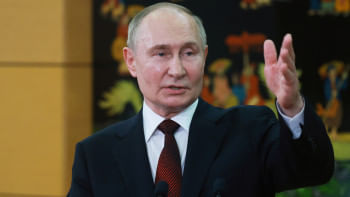Tagore's gift to Nritya

Rabindranath Tagore, a poet, philosopher, composer, playwright, and painter, was one of the strongest figures to have given a solid form to the cultural life in the sub-continent. As he travelled the world, his visits to different parts of South Asia, in particular, opened his eyes to a broader Asian framework. His interest lay particularly in what he called the “operatic” South East Asian theatre forms, and devoted much of his time and energy in creating his own theatrical style, with the combination of dance and music.
Tagore first came across Manipuri dancing as early as 1919, and was heavily influenced by the dance form. So much so, that when he established Shantiniketon University, he invited expert gurus of the dance form to teach there. Manipuri's influence worked its way to help Rabindranath form his own unique dance plays called Rabindra nritya natya. Some of his immensely popular nritya natya in the sub-continent are Chitrangada, Shyama, and Chandalika. His fascination with Manipuri Rasleela at Machhimpur, a Bishnupriya Manipuri locality in the modern Sylhet District in Bangladesh in 1920, ended up giving the dance form global attention.
Even though Rabindra nritya natya was dominantly influenced by Manipuri to start with, added to this style was Kathakali as well as Mohiniyattam of Kerala. The poet's trips all over India introduced him to Ceylonese (Kandyan), Javanese (Serimpi) and Bali (Legong), which were also integrated in Tagore dance choreographies. The folk dances (Garba, Baul, Jari, Raibenshe, etc) were other ingredients of Tagore dances. He was reluctant towards overarching physical gestures, and his dances tend to avoid a predominance of mudra -- whether of the eyes, fingers or limbs. Over-dressing and over-ornamentation were also discarded from his dance form.
While Tagore's role in launching India's first 'modern' dance is widely appreciated, his contribution towards re-establishing Indian dance to a position of 'high art' is perhaps of much greater importance. During the British rule, traditional dance forms of India were seen as corrupt time-pass for 'prostitutes' or 'rustic village folk', due to which educated middle-class Indian families did not have the courage to allow their children to learn dance at the time. It was in this negative atmosphere that Rabindranath made use of his vast national and international influence to breathe life into dance as an art form, by dispelling the social taboos that were then attached to it.
After introducing dance in his university curriculum, Tagore consistently encouraged his students and faculty members to perform on public stages, and even traveled across the country with troupes from Santiniketan. The staging of 'Natir Puja' in 1927 marked the return of children from middle-class Indian families as dancers. Within two to three decades from the first staging of 'Natir Puja', nritya had recovered, and gained back its full social acceptance, and took back its valuable place in the heart of the sub-continent.
It was this great role of Tagore in the world of art and culture, and his gift to nritya that now allows generations to take up dance as a profession with pride and to dream of a bright, passionate future.


 For all latest news, follow The Daily Star's Google News channel.
For all latest news, follow The Daily Star's Google News channel. 



Comments